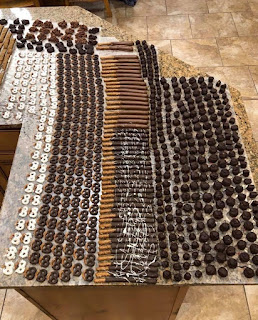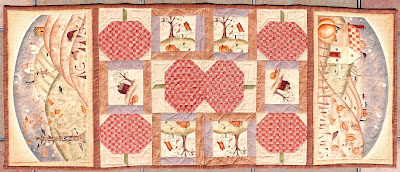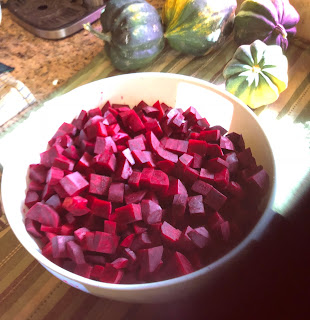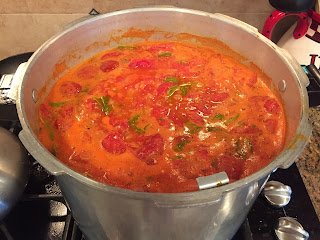This post features one of the quilt kits that I acquired during the 2017 Shop Hop. I was particularly drawn to the fabrics in this quilt, in part because of the familiarity in the storybook prints.
I also found some of the fabrics included in the "snowball" blocks reminiscent of Christmas prints from about the 1960s.
I was really pleased with the quilting work that Utah Valley Quilting provided for this project. I picked some all-over swirls for the center and the outer border of the quilt. I decided to go with a snowflake pattern for the white area between the trees. I like the way this pattern filled the space without adding too much "stuff" and "busyness."
Because my goal for this quilt was to have it serve as a cozy, cuddle up quilt for the Christmas season, I opted to use minky fabric for the back. For those of you not familiar with minky, it is a 100% polyester fabric with a soft pile that is slightly stretchy. It is much softer than fleece and is a great choice for baby blankets. Quilters tend to have mixed feelings about working with minky. Because of its stretch, it can be a bit of a challenge to hold in place. On the other hand, some really like it because of how the quilting design shows on the back. You may need to adjust your computer screen to enlarge the below picture to see the details on the trees in the inner border. I've also found that when I'm sewing the binding on my quilts with minky backs, I need to take extra care to ensure that my needle is going through the minky.
As you can see from the picture below, my cat approved of this quilt. If you look closely, you can see the clips that I use to hold the binding in place as I sew it. Perhaps I will use a future post to tell more about these and some of my other favorite quilting notions. In case you were wondering, I opted not to disturb the cat's nap at this point in time. The quilt was, however, finished before Christmas.
I am one who definitely enjoys the comfort in the familiar, particularly around the Christmas season. As much as I enjoy the memories and traditions associated with the familiar, I've been reminded in recent weeks not to allow myself to get so attached to the familiar that I miss out on new opportunities that may lie ahead. The Christmas/New Year's season provides the context for reflecting on the blessings of the past while anticipating the blessings that lie ahead.
As we enjoy these final hours of 2017, I pray that you will look with anticipation to the new year. I will close with these verses that were included on our church's bulletin cover this morning.
The LORD bless you, and keep you; the LORD make His face shine on you, and be gracious to you; the LORD lift up His countenance on you and give you peace.
Numbers 6:24-26


















































